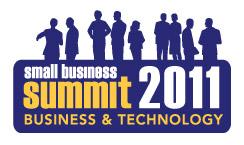Internet Explorer 9 “Do Not Track” Security Feature…Will it Really Work?
March 16th, 2011 | This post was written by tubs I was reading this article in the Wall Street Journal yesterday when I realized that Microsoft released their new version of their uber popular Internet Explorer web browser which included the highly touted “Do Not Track” feature. The new feature is news-worthy for a few reasons in my opinion. First of all, Internet Explorer is now the first major browser to include this type of feature in a major release of their we browser although Mozilla’s Firefox browser is said to include a similar feature in an upcoming release.
I was reading this article in the Wall Street Journal yesterday when I realized that Microsoft released their new version of their uber popular Internet Explorer web browser which included the highly touted “Do Not Track” feature. The new feature is news-worthy for a few reasons in my opinion. First of all, Internet Explorer is now the first major browser to include this type of feature in a major release of their we browser although Mozilla’s Firefox browser is said to include a similar feature in an upcoming release.
I think that this new “do not track” feature is also an interesting advancement because of how quickly Microsoft developed and included this functionality in a major release of their web browser. This type of new feature only started making news a few months ago when a number of consumer privacy advocates started complaining about how so many websites, like Facebook and others, are now collecting personal information about people and their web browsing habits when they visit their websites. Microsoft and Mozilla took these requests so seriously that they decided to include this feature in their next browser releases only a quarter later. In my opinion these web browser companies decided to include this feature so quickly because they knew it was relatively easy to implement (in the way they have) and they also knew that this new feature would make big news and would therefore help market their new releases.
Finally, I think this new web browser feature is of note because of the way it has been implemented technically may not be very effective at doing exactly what it is meant for. Basically, now when a person using Internet Explorer 9 browses to a web page that is trying to collect information about the person or their computer or their web browsing history it sends a series of “header” records to the requesting website indicating that the person requests that the information not be shared with anyone else or used for marketing purposes. The only problem here is that there are no set standards around these “header” records and no major websites or eCommerce associations have acknowledged that they will accept or abide by these requests to not share the user’s data. Inevitably, what will happen here is that Microsoft will start pointing the figure at the eCommerce sites that do not recognize these header records until they cave in and recognize them because Internet Explorer is the most used web browser in the world and nobody wants to fine themselves on the wrong side of this argument because their sites will be bad mouthed in the press and seen as non-consumer friendly.
In conclusion, I think this is definitely a step in the right direction by Microsoft but I am not sure that this is really the best or most effective way to go about it. I guess if this is just the first step in the direction of better security for shopper’s personal information on the web then it is probably worth it and will probably get us where we want to go.
What do you think about this new feature that Microsoft started offering yesterday in their new Internet Explorer 9?









